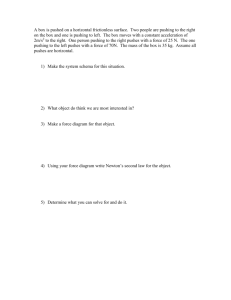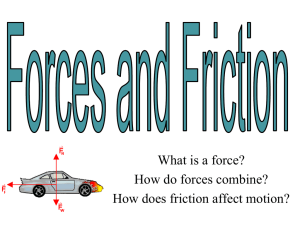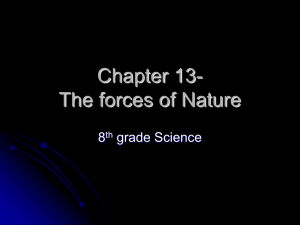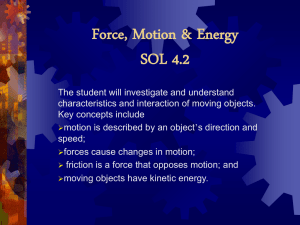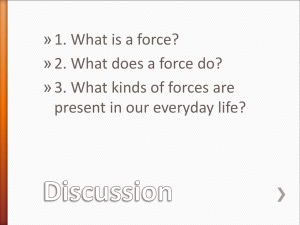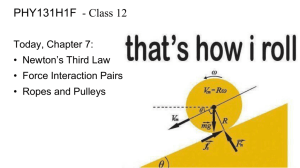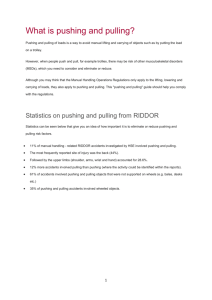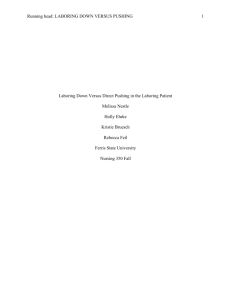Ch. 1 Sections 2&3 Review
advertisement
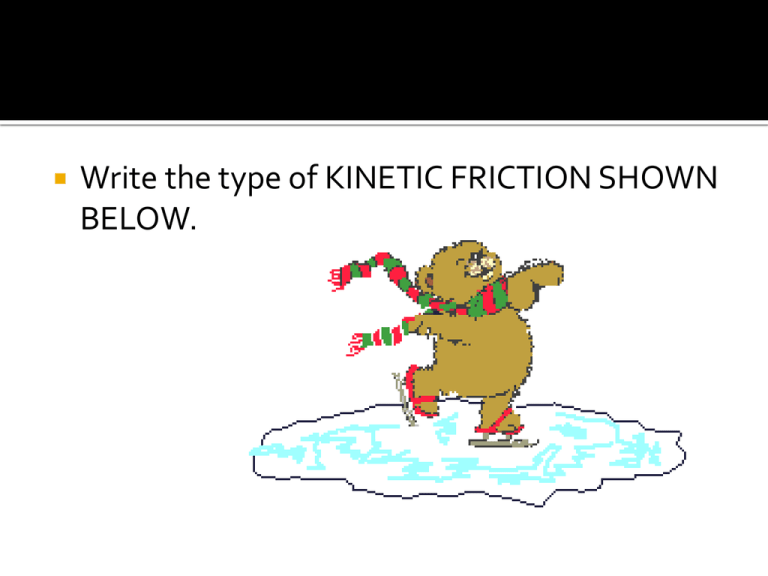
Write the type of KINETIC FRICTION SHOWN BELOW. What do you know about friction? Follow along as we review the answers to the friction questions. ANSWER THE QUESTIONS ON THE PAPER THAT WAS PASSED OUT TO YOU. A combination of all forces that act on an object. Friction is a force between any two surfaces, that opposes motion. Unbalanced force a) The water is a lubricant that when spilled, fills in the hills and valleys on the floor and reduces friction between your feet and the floor Newtons Friction occurs because surfaces are covered with microscopic “hills and valleys” that stick to each other when they come in contact. Rough Surfaces have more hills and valleys that increase the force of friction. Smooth surfaces have less hills and valleys, therefore less friction occurs. These surfaces will have more friction because they have larger hills and valleys than the other picture. This means they are more rough. If the force pushing the two surfaces together is great, the hills and valleys are in closer contact and friction increases. More Force = More Friction Make a surface rougher Push surfaces together harder Kinetic- sliding a book across the tabletop Static- pushing a piece of furniture and it not moving. Sliding Kinetic Friction- moving a book across a desk, applying brakes in a car, scratching your arm Rolling Kinetic Friction- wheels of a bike, toy car, trains on a track Fluid Kinetic Friction- oil lubricating parts on a plane, car, or bike, water flowing through a hose Two young girls are fighting over a present. One is pushing is with a force of 10N to the right and the other is pushing with a force of 50 N to the left. Use the picture below to answer the questions that follow. 1.The forces shown above are PUSHING / PULLING/ PUSHING AND PULLING forces. 2. The forces shown above are WORKING TOGETHER / OPPOSITE FORCES. 3. The forces are EQUAL / NOT EQUAL. 4. The forces DO / DO NOT balance each other. 5. There IS / IS NO motion. 6. The net force is __________________ in _________________ (direction). Two children are moving their wagon across the street. One is pulling the wagon to the left with a force of 100N and the other is pushing the wagon with a force of 100 N to the left. Use the picture below to answer the questions that follow. 1.The forces shown above are PUSHING / PULLING/ PUSHING AND PULLING forces. 2. The forces shown above are WORKING TOGETHER / OPPOSITE FORCES. 3. The forces are EQUAL / NOT EQUAL. 4. The forces DO / DO NOT balance each other. 5. There IS / IS NO motion. 6. The net force is __________________ in _________________ (direction).

